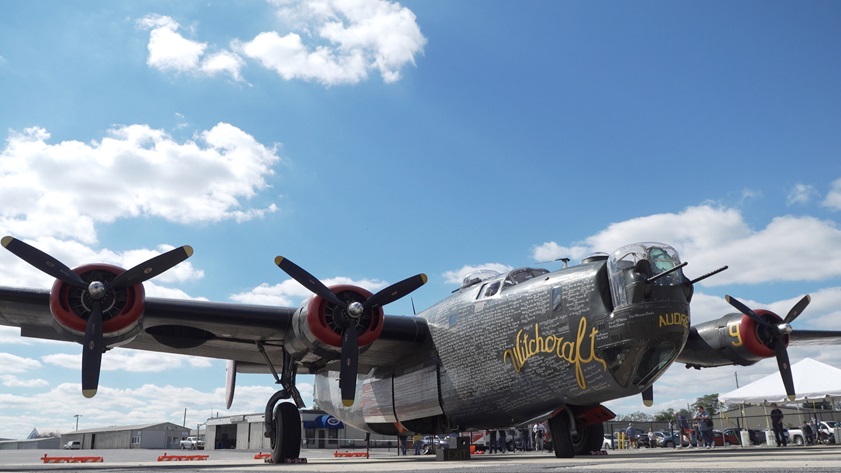Right seat in a B–24 Liberator
In a stiff, nearly 90-degree crosswind, the Collings Foundation’s B–24 Liberator lumbers down Frederick, Maryland’s, 5,219-foot runway toward its next stop on the Wings of Freedom Tour.
I’m flying right seat as second in command with Collings Foundation Chief Pilot Robert Pinksten, who has 1,000 hours in the B–24.
“It’s an honor,” Pinksten says of flying the Liberator and other warbirds in the Collings Foundation’s collection. “It’s almost like a national treasure.”
The most difficult part of the mission, Pinksten says, is taxiing on narrow taxiways and steering the aircraft with its free-castering nosewheel using thrust from the warbird's four 1,200-horsepower Pratt & Whitney R-1830-65 engines. “We take them to airports not designed for a [Boeing] 737 but with a wingspan of a 737,” he says of the Liberator’s 110-foot wingspan, which is just a few feet shorter than the Boeing 737’s.
As SIC, I help with checklists, startup, takeoff, and cruise. Riding in the B–24 would have been amazing enough, but being able to fly it as a multiengine-rated pilot is almost surreal. Stepping up from a Piper Aztec to a four-engine Liberator is quite the jump.
Running through the after-takeoff checklist, we visually check the engines.
“Mine look good and they’re not on fire,” Pinksten says.
“Mine look good, and they’re not on fire either—goodness!” I respond, a little caught off guard.
My philosophy is if an offer to fly something new comes along, jump on it without having to be asked twice. In this case, awe took over my ability to respond the first time. En route to the next stop on the tour in Westminster, Maryland, Pinksten asks the prized question:
“Wanna fly?”
“Cruise [checklist]?,” I respond, my mind still focused on what had been my No. 1 priority (checklists) and not comprehending what he said.
“No, not yet. You wanna fly?”
I gladly accept, taking the controls of the 74-year-old Liberator that flew in the Pacific Theater for the Royal Air Force. This aircraft has had multiple lives. After it was produced in 1944, the U.S. Army transferred it to the Royal Air Force for service. After World War II, the aircraft was parked in a bomber graveyard in India, according to the Collings Foundation. In 1948, the Indian Air Force restored it and other B–24s, and it was flown until 1968 when it was abandoned again. A private collector purchased it in 1981 and sold it to Dr. Robert F. Collings in 1984. Restoration started in 1985, and the aircraft took flight again in 1989. The Liberator has been repainted a few times, and received its current nose art in 2005.
Pinksten directs me to bring the throttles back to 30 inches of manifold pressure in cruise.
“How does it feel to move four throttles?” he asks. “Kind of cool?”
It’s a stretch for my hands to grasp all four throttles at once, but it is “really cool,” I respond, grinning from ear to ear.
I feel as if I am constantly changing control inputs to try to maintain a constant pitch attitude and mention it to Pinksten, who reassures me that I’m not changing pitch much—what I’m feeling is the people in the rear of the airplane walking around.
As we near Westminster, Pinksten takes the controls and sets up for a textbook overhead approach and beautiful landing. The P–51 and B–25 are already parked in the display area as we taxi up, and the B–17 touches down after us. The crowds are already forming to see these remarkable pieces of history up close—some to tour them on the ground and some to go up for their own exciting flights.
The Collings Foundation's Wings of Freedom Tour winds its way across the United States every year. To see when it will be in your area in 2019, visit the foundation's website.




